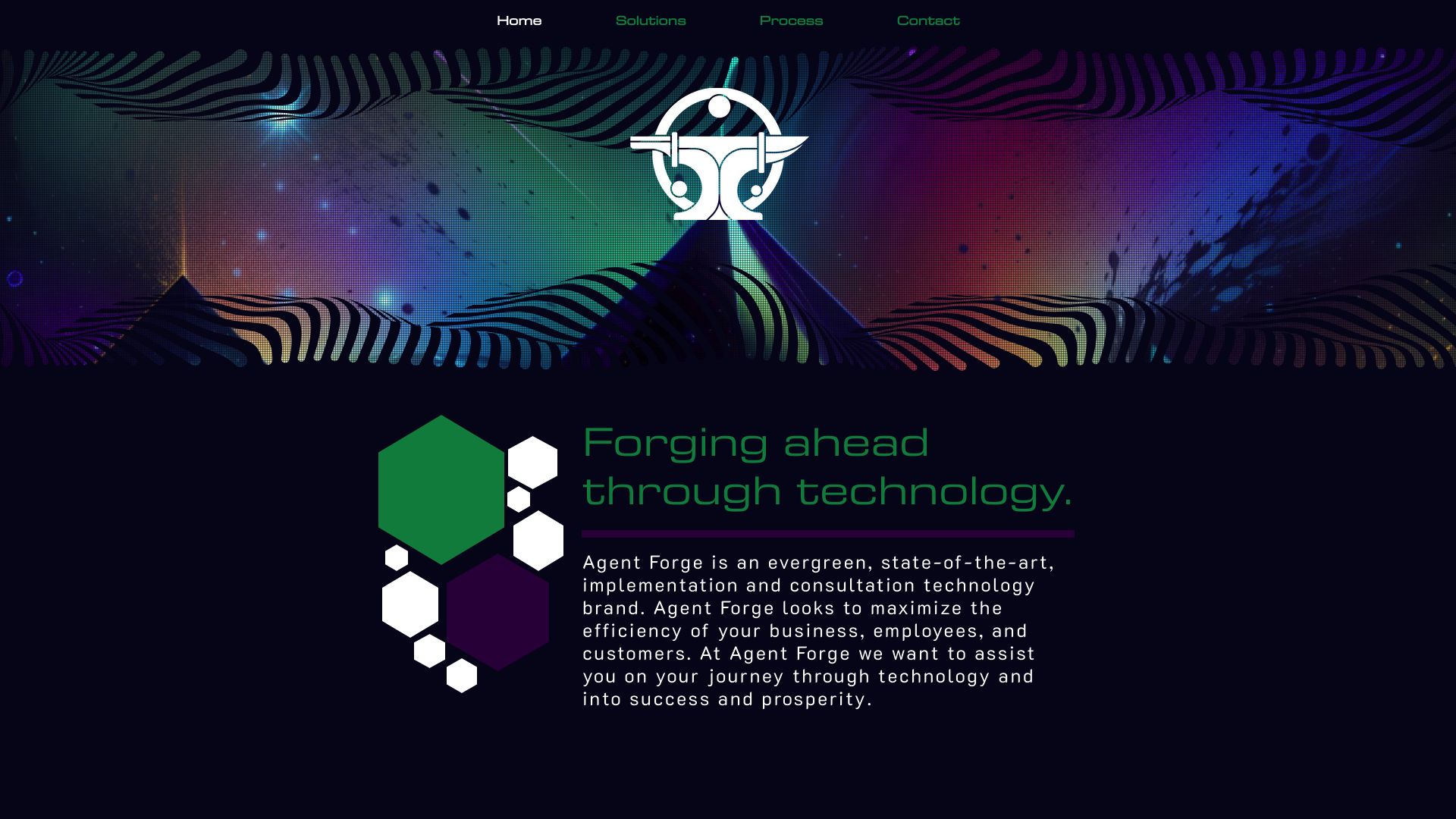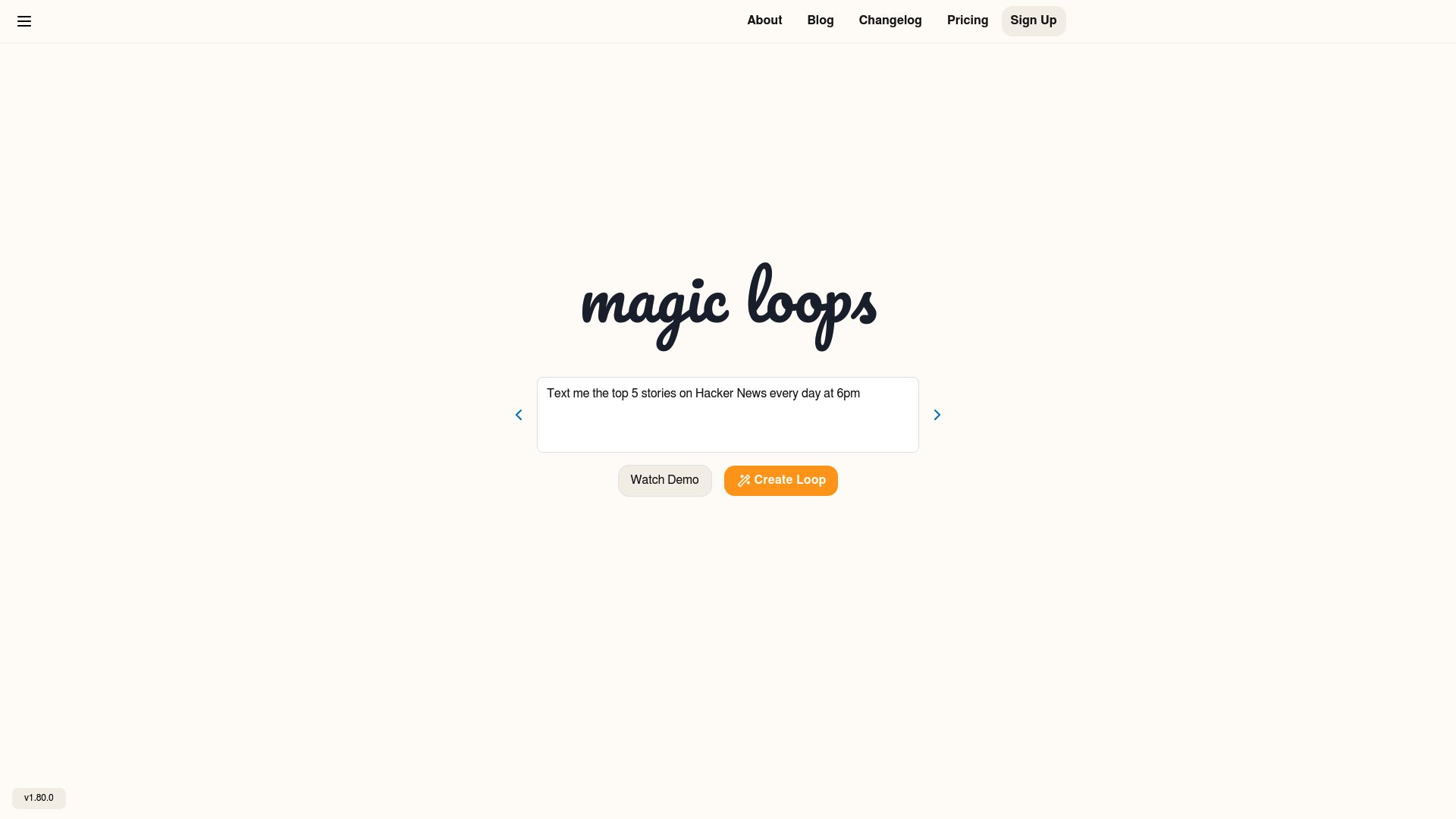Agent Forge vs. Magic Loops: AI Development Platforms Compared
AI agent development platforms revolutionize how businesses automate tasks and create intelligent systems. This comparison delves into Agent Forge vs. Magic Loops, two innovative solutions reshaping the AI landscape. Agent Forge offers developers a flexible, open-source framework for building custom AI agents, while Magic Loops focuses on natural language programming for automated workflows.
We’ll explore their key features, strengths, and limitations to help you determine which platform best suits your AI development needs. As we examine these tools, we’ll also introduce SmythOS, a comprehensive solution that addresses the gaps in both platforms and offers unparalleled capabilities for AI agent creation and deployment.
Agent Forge Overview
Agent Forge empowers developers to create autonomous AI agents and cognitive architectures. This open-source Python framework accelerates the development of intelligent systems capable of automating complex tasks and workflows.
Agent Forge supports major language models like GPT and Claude, while also accommodating self-hosted options through Oobabooga. The platform’s flexible memory management system, powered by ChromaDB, enables agents to maintain context and learn from past interactions. Developers can rapidly prototype and iterate on agent designs using pre-built templates and a modular architecture.
Agent Forge empowers developers to create autonomous AI agents and cognitive architectures. This open-source Python framework accelerates the development of intelligent systems capable of automating complex tasks and workflows.


The framework excels at orchestrating multi-agent collaborations, allowing developers to create sophisticated AI systems that tackle complex problems through coordinated efforts. Agent Forge’s prompt engineering system guides agent behavior, ensuring consistent and purposeful interactions. While primarily aimed at developers comfortable with code, the platform’s low-code approach strikes a balance between flexibility and accessibility.
Agent Forge seamlessly integrates with third-party APIs and custom data sources, expanding its utility across diverse applications. From chatbots and virtual assistants to automated business processes, the framework adapts to a wide range of use cases. However, Agent Forge lacks some features found in more comprehensive platforms, such as a visual builder or extensive debugging tools. Despite these limitations, its open-source nature fosters a collaborative community, driving ongoing improvements and innovations in AI agent development.
Magic Loops Overview
Magic Loops transforms automation by merging large language models with code to create programmable workflows. Users describe tasks in natural language, which the platform converts into runnable “loops” of code and AI blocks.


The platform’s key strengths lie in its accessibility and flexibility. Users can modify loops to meet specific needs, ensuring precise automation. Magic Loops integrates various APIs and AI models, making workflows versatile and powerful. The platform also fosters collaboration through public loops, allowing users to share and utilize existing automations.
Magic Loops transforms automation by merging large language models with code to create programmable workflows. Users describe tasks in natural language, which the platform converts into runnable “loops” of code and AI blocks.
Magic Loops offers pre-built templates for common tasks, such as monitoring YC launches or generating daily image prompts. This approach democratizes programming by bridging the gap between no-code tools and full development environments. The company aims to increase the number of people who can code from 1 in 200 to 1 in 5.
However, Magic Loops has limitations. It lacks a visual builder and no-code editor, potentially limiting accessibility for non-technical users. The platform also doesn’t offer features like debug mode, multimodal support, or advanced security measures such as data encryption. These gaps may impact its suitability for enterprise-level applications or users requiring more robust development tools.
Magic Loops positions itself as a tool for developers and businesses seeking to leverage AI for task automation. Its focus on natural language programming and integration capabilities makes it a noteworthy contender in the AI agent builder space, particularly for users comfortable with some coding. As the platform evolves, addressing its current limitations could significantly enhance its competitive edge in the rapidly advancing field of AI automation tools.
Feature Comparison
Agent Forge and Magic Loops offer distinct approaches to AI agent development, each with its own strengths and limitations. Agent Forge provides a flexible, open-source framework for developers to build custom AI agents, while Magic Loops focuses on natural language programming to create automated workflows.
Agent Forge excels in its support for multiple large language models and customizable memory management using ChromaDB. It enables multi-agent collaboration and integration with various APIs, making it versatile for complex AI projects. However, Agent Forge lacks a visual builder and no-code options, which may limit accessibility for non-technical users.
Magic Loops, on the other hand, emphasizes ease of use by allowing users to describe tasks in natural language. This approach bridges the gap between no-code tools and full development environments. Magic Loops offers pre-built templates and public loops for sharing automations, fostering a collaborative ecosystem. Yet, it falls short in providing advanced features like debug mode, multimodal support, and robust security measures such as data encryption.
Both platforms have gaps in core components and security features compared to more comprehensive solutions like SmythOS. Neither offers a visual builder, debug mode, or advanced security features like data encryption and IP control. These limitations may impact their suitability for enterprise-level applications or users requiring more robust development and security tools.
| Agent Forge | Magic Loops | SmythOS | |
|---|---|---|---|
| CORE FEATURES | |||
| Hosted Agents (Dev, Production) | ✅ | ❌ | ✅ |
| Environments (Dev, Production) | ✅ | ❌ | ✅ |
| Visual Builder | ❌ | ❌ | ✅ |
| No-Code Options | ❌ | ✅ | ✅ |
| Autonomous Agents | ✅ | ❌ | ✅ |
| Explainability & Transparency | ❌ | ✅ | ✅ |
| Debug Tools | ❌ | ✅ | ✅ |
| Multimodal | ❌ | ❌ | ✅ |
| Multi-Agent Collaboration | ✅ | ❌ | ✅ |
| Audit Logs for Analytics | ❌ | ❌ | ✅ |
| Work as Team | ❌ | ❌ | ✅ |
| Bulk Work | ❌ | ✅ | ✅ |
| Agent Work Scheduler | ❌ | ✅ | ✅ |
| Logs & Monitoring | ❌ | ✅ | ✅ |
| SECURITY | |||
| Constrained Alignment | ❌ | ❌ | ✅ |
| Data Encryption | ❌ | ❌ | ✅ |
| OAuth | ❌ | ❌ | ✅ |
| IP Control | ❌ | ❌ | ✅ |
| COMPONENTS | |||
| Foundation AIs | ❌ | ❌ | ✅ |
| Huggingface AIs | ❌ | ❌ | ✅ |
| Zapier APIs | ❌ | ❌ | ✅ |
| All other APIs, RPA | ❌ | ✅ | ✅ |
| Classifiers | ❌ | ❌ | ✅ |
| Logic | ❌ | ✅ | ✅ |
| Data Lakes | ❌ | ❌ | ✅ |
| DEPLOYMENT OPTIONS (EMBODIMENTS) | |||
| Deploy as API | ❌ | ✅ | ✅ |
| Deploy as Webhook | ❌ | ✅ | ✅ |
| Staging Domains | ❌ | ❌ | ✅ |
| Production Domains | ❌ | ❌ | ✅ |
| API Authentication (OAuth + Key) | ❌ | ✅ | ✅ |
| Deploy as Site Chat | ❌ | ❌ | ✅ |
| Deploy as Scheduled Agent | ❌ | ✅ | ✅ |
| Deploy as GPT | ❌ | ❌ | ✅ |
| Scalability | ❌ | ✅ | ✅ |
| DATA LAKE SUPPORT | |||
| Hosted Vector Database | ❌ | ✅ | ✅ |
| Sitemap Crawler | ❌ | ❌ | ✅ |
| YouTube Transcript Crawler | ❌ | ❌ | ✅ |
| URL Crawler | ❌ | ❌ | ✅ |
| PDF Support | ✅ | ❌ | ✅ |
| Word File Support | ❌ | ❌ | ✅ |
| TXT File Support | ✅ | ❌ | ✅ |
Best Alternative to Agent Forge and Magic Loops
SmythOS emerges as the superior alternative to Agent Forge and Magic Loops, offering a comprehensive platform for AI agent development and deployment. We designed SmythOS to address the limitations of other platforms while providing unparalleled flexibility and power.
Our visual builder sets SmythOS apart, enabling users to create complex AI workflows without extensive coding knowledge. This drag-and-drop interface democratizes AI development, making it accessible to a broader audience while still offering the depth technical users require. Unlike Agent Forge’s code-centric approach or Magic Loops’ limited natural language programming, SmythOS strikes the perfect balance between ease of use and advanced capabilities.
SmythOS excels in its extensive integration ecosystem, supporting a vast array of APIs, AI models, and tools. This flexibility ensures that SmythOS fits seamlessly into virtually any workflow or business process.
SmythOS excels in its extensive integration ecosystem, supporting a vast array of APIs, AI models, and tools. This flexibility ensures that SmythOS fits seamlessly into virtually any workflow or business process. While Agent Forge and Magic Loops offer some integration options, they pale in comparison to the robust ecosystem SmythOS provides.
Security and scalability set SmythOS apart from its competitors. We implemented advanced features like data encryption, OAuth support, and IP control, addressing the enterprise-level security concerns that Agent Forge and Magic Loops overlook. SmythOS also offers unmatched scalability, supporting everything from small projects to large-scale enterprise deployments with ease.
Ultimately, SmythOS stands out as the best alternative by offering a complete package of features, security, and usability that Agent Forge and Magic Loops simply can’t match. Whether you’re a developer, business leader, or AI enthusiast, SmythOS provides the tools and flexibility needed to bring your AI projects to life efficiently and effectively.
Conclusion
Agent Forge and Magic Loops offer unique approaches to AI agent development, each with distinct strengths. Agent Forge provides a flexible, open-source framework for developers to build custom AI agents, while Magic Loops focuses on natural language programming for automated workflows. However, both platforms have limitations in visual building tools, debugging capabilities, and advanced security features.
SmythOS stands out as the superior choice, offering a comprehensive solution that addresses these limitations. Our platform combines the flexibility of Agent Forge with the accessibility of Magic Loops, while adding crucial features like a visual builder, debug mode, and robust security measures. SmythOS empowers users to create and deploy AI agents across various platforms with unparalleled ease and efficiency.
We invite you to experience the future of AI agent development with SmythOS. Create a free account to explore our platform’s capabilities, including our extensive integration ecosystem and versatile deployment options. Unlock the full potential of AI for your business and join the economic revolution SmythOS is driving across industries.
Last updated:
Disclaimer: The information presented in this article is for general informational purposes only and is provided as is. While we strive to keep the content up-to-date and accurate, we make no representations or warranties of any kind, express or implied, about the completeness, accuracy, reliability, suitability, or availability of the information contained in this article.
Any reliance you place on such information is strictly at your own risk. We reserve the right to make additions, deletions, or modifications to the contents of this article at any time without prior notice.
In no event will we be liable for any loss or damage including without limitation, indirect or consequential loss or damage, or any loss or damage whatsoever arising from loss of data, profits, or any other loss not specified herein arising out of, or in connection with, the use of this article.
Despite our best efforts, this article may contain oversights, errors, or omissions. If you notice any inaccuracies or have concerns about the content, please report them through our content feedback form. Your input helps us maintain the quality and reliability of our information.
